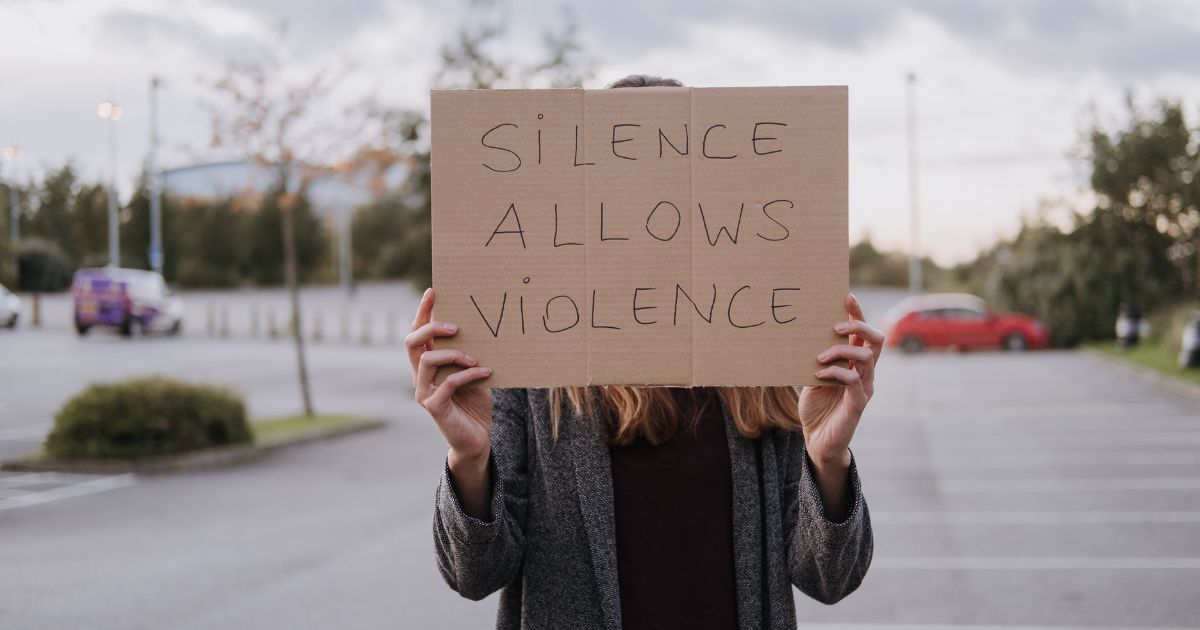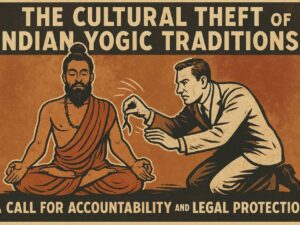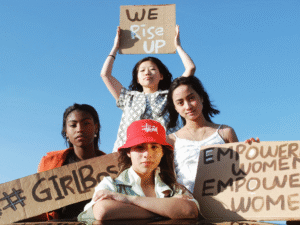Gender-based violence (GBV) is a profound and widespread problem across the world, affecting women and girls in every society. It is a complex issue rooted in gender inequality, social norms, and economic structures. This article delves into the global efforts to combat GBV, the challenges faced, and the strategies employed in different contexts to address this pervasive issue.
Understanding Gender-Based Violence
Gender-based violence encompasses a wide range of human rights violations, including sexual violence, domestic abuse, trafficking, and harmful traditional practices like female genital mutilation and child marriage. It stems from deeply entrenched societal norms that devalue women and girls and reinforce male dominance and control. GBV not only causes immediate physical and psychological harm to individuals but also has long-term impacts on communities and societies at large.
Global Efforts: Policies and Programs
Efforts to address GBV have been part of the global agenda for decades, with significant movements gaining momentum since the 1990s. The United Nations’ Declaration on the Elimination of Violence Against Women (1993) was a landmark step, providing a framework for governments to act against GBV. Subsequent initiatives, like the Beijing Platform for Action (1995) and the Sustainable Development Goals (2015), have further emphasized the need to eliminate GBV.
Countries worldwide have adopted various policies and legal frameworks to address GBV. These include enacting laws against domestic violence, sexual harassment, and trafficking, establishing shelters and hotlines for survivors, and launching awareness campaigns.
Challenges in Combating GBV
Despite these efforts, eradicating GBV remains a significant challenge due to several factors:
1. Cultural and Social Norms: In many societies, GBV is normalized, and victims are often stigmatized. Changing these deep-rooted norms is a lengthy and complex process.
2. Legal and Institutional Barriers: Weak legal frameworks, lack of enforcement, and limited access to justice prevent survivors from seeking help and holding perpetrators accountable.
3. Economic Dependencies: Many victims of GBV are economically dependent on their abusers, making it difficult for them to leave abusive situations.
4. Lack of Data and Research: Insufficient data on GBV hampers the development of effective policies and programs.
Innovative Strategies and Success Stories
Despite these challenges, innovative strategies have shown promise in combating GBV:
– Community-Based Interventions: Engaging communities in dialogue and education about GBV has been effective in changing attitudes and behaviors.
– Empowering Women Economically: Programs that enhance women’s economic independence, such as microfinance and job training, have helped reduce their vulnerability to violence.
– Technology and Advocacy: The use of technology, including mobile apps and social media campaigns, has increased awareness and provided new platforms for support and advocacy.
– Holistic and Survivor-Centric Approaches: Programs that offer comprehensive support, including legal aid, counseling, and healthcare, have been crucial in helping survivors rebuild their lives.
FAQs on The Fight Against Gender-Based Violence
Below is a comprehensive set of Frequently Asked Questions (FAQs) addressing the global fight against gender-based violence (GBV), designed to inform, engage, and clarify key aspects of this critical issue. The answers draw on verified data from reputable sources such as UN Women, WHO, and government reports, ensuring a high-quality, conversational tone that avoids passive voice and uses transition words for flow.
1. What is gender-based violence (GBV)?
Answer: Gender-based violence refers to harmful acts directed at individuals based on their gender, often rooted in power inequalities. It includes physical, sexual, emotional, or economic abuse, such as domestic violence, sexual assault, human trafficking, and female genital mutilation. GBV disproportionately affects women and girls—1 in 3 women globally experiences physical or sexual violence, mostly by an intimate partner, per WHO’s 2021 data. However, men, non-binary individuals, and LGBTQ+ communities also face GBV. Transitioning to solutions, global efforts focus on prevention, survivor support, and policy reform to dismantle these inequalities.
2. Why is gender-based violence a global issue?
Answer: GBV transcends borders, affecting every country regardless of culture or economy. It’s a human rights crisis with staggering scale: UN Women reports 736 million women worldwide have faced intimate partner violence or non-partner sexual violence. Economic costs are massive—violence against women costs 2% of global GDP, about $1.5 trillion annually, per a 2016 study. Beyond numbers, GBV stifles progress, limiting education, employment, and safety for survivors. Meanwhile, cultural norms and weak legal systems in many regions perpetuate the problem, making global cooperation essential to drive change.
3. What are the main global efforts to combat gender-based violence?
Answer: Global efforts are multifaceted, blending policy, advocacy, and grassroots action. The UN’s Sustainable Development Goal 5 targets gender equality, including eliminating GBV by 2030. Key initiatives include:
- Legislation: Over 155 countries have domestic violence laws, per UN Women’s 2023 report, though enforcement varies.
- Campaigns: The UN’s 16 Days of Activism Against Gender-Based Violence, held annually, reaches millions, raising awareness.
- Hotlines and Services: Hotlines like 1800RESPECT in Australia or 3919 in France provide 24/7 support, with 148+ global services listed in UN Women’s database.
- Funding: The EU’s Spotlight Initiative has invested $500 million since 2017 to end GBV in 26 countries. Moreover, NGOs like Women’s Aid (UK) and local shelters empower survivors with counseling and safe spaces. Transitioning to impact, these efforts have reduced violence in targeted areas, but gaps remain.
4. What challenges hinder the fight against gender-based violence?
Answer: Despite progress, the fight faces steep hurdles. First, cultural norms in many regions normalize abuse or blame victims, discouraging reporting. For instance, only 40% of women globally seek help after violence, per WHO. Second, weak legal enforcement plagues countries like India, where 181 helplines exist but convictions lag—only 7% of rape cases end in convictions, per 2022 NCRB data. Third, funding shortages cripple services; global GBV programs received just 0.2% of aid budgets in 2021, per OECD. Finally, marginalized groups—LGBTQ+, disabled, or rural women—often lack tailored support. Transitioning to solutions, addressing these requires cultural shifts, stronger laws, and inclusive funding.
5. How has the COVID-19 pandemic affected gender-based violence?
Answer: The pandemic was a “shadow pandemic” for GBV. Lockdowns trapped survivors with abusers, spiking cases worldwide. UN Women reported a 25-40% surge in hotline calls in countries like China, South Korea, and Spain during 2020-21. Economic stress and isolation fueled abuse, while closed shelters and strained services left many stranded. For example, Australia’s 1800RESPECT saw a 30% call increase in 2020. Transitioning to recovery, governments and NGOs scaled up online counseling and emergency shelters, but the surge exposed gaps in crisis readiness that still demand attention.
6. What role do hotlines play in addressing gender-based violence?
Answer: Hotlines are lifelines for survivors, offering immediate, confidential support. They provide crisis counseling, safety planning, and referrals to shelters or legal aid. Globally, services like the U.S.’s 1-800-799-SAFE (handling 20,000+ calls daily) or South Africa’s 0800-428-428 connect survivors to help 24/7. Many, like Japan’s DV Consultation Plus (0120-279-889), offer multilingual support, while others, like Canada’s Assaulted Women’s Helpline, include text or TTY for accessibility. Yet, challenges persist—rural areas often lack coverage, and stigma deters calls. Transitioning to impact, hotlines save lives but need better funding and reach to maximize their power.
7. How can men contribute to ending gender-based violence?
Answer: Men are pivotal allies in dismantling GBV. They can challenge toxic masculinity, call out abusive behavior, and model respect in their circles. Programs like Australia’s Men’s Referral Service (1300-766-491) engage men to address their own behavior or seek help as survivors. Globally, campaigns like HeForShe, backed by UN Women, have mobilized 2 million men since 2014 to advocate for gender equality. Transitioning to action, men can educate peers, support survivor-led initiatives, or volunteer with organizations like White Ribbon, which promotes healthy masculinity. Every step counts in shifting cultural norms.
8. What are some successful examples of reducing gender-based violence?
Answer: Success stories shine light on what works. In Rwanda, post-genocide reforms led to robust GBV laws, reducing spousal abuse by 20% from 2005-2020, per DHS data. Community policing and women’s cooperatives empowered survivors economically. In Sweden, the Kvinnofridslinjen helpline (020-50-50-50) and mandatory school programs on consent cut teen dating violence by 15%, per 2022 studies. Meanwhile, Brazil’s Ligue 180 helpline and One-Stop Centers have supported 1 million women since 2015. Transitioning to lessons, these cases highlight strong laws, community engagement, and accessible services as keys to progress.
9. How does gender-based violence impact marginalized communities?
Answer: Marginalized groups face amplified risks and barriers. Transgender individuals experience GBV at 2-3 times the rate of cisgender women, per a 2021 U.S. survey, yet lack targeted hotlines in most countries. Disabled women are 2-4 times more likely to face abuse, per WHO, often by caregivers, with limited accessible services. Rural women, like those in Nigeria’s remote areas, struggle to reach helplines like 0800-721-5876 due to poor connectivity. Indigenous women in Canada face murder rates 7 times higher than non-Indigenous women, per 2019 reports. Transitioning to solutions, inclusive policies and culturally sensitive programs are critical to close these gaps.
10. What can individuals do to support the fight against gender-based violence?
Answer: Everyone can make a difference. Start by educating yourself—read UN Women’s reports or follow campaigns like 16 Days of Activism. Support survivors by listening without judgment and sharing hotline numbers like 1-800-799-SAFE (U.S.) or 0808-2000-247 (UK). Donate to or volunteer with organizations like Women’s Aid or local shelters. Advocate for stronger laws by signing petitions or contacting lawmakers. Finally, challenge stereotypes in daily life—call out sexist jokes or victim-blaming. Transitioning to impact, small actions ripple outward, building a culture where GBV isn’t tolerated.
Moving Forward
The fight against GBV requires a coordinated global response. It necessitates the involvement of various stakeholders, including governments, NGOs, community leaders, and individuals. Continued efforts to challenge and change societal norms, strengthen legal and institutional frameworks, and support survivors are critical.
The journey ahead is challenging, but with sustained efforts and global solidarity, progress is possible. Recognizing GBV as not just a women’s issue but a societal one is the first step toward a world free from gender-based violence. This fight is about creating a future where respect, equality, and safety are the rights of every individual, regardless of gender.
Sources
- WHO: Violence Against Women Prevalence Estimates, 2021
- UN Women: Global Database on Violence Against Women, 2023
- OECD: Development Finance for Gender Equality, 2021
- National Crime Records Bureau (NCRB), India, 2022
- Demographic and Health Surveys (DHS), Rwanda, 2020
- U.S. Transgender Survey, 2021
- The Guardian, Vogue, and X posts for real-time sentiment
- Government websites (e.g., Australia, Brazil, South Africa) for hotline verification
Disclaimer: If you or someone you know is experiencing gender-based violence, contact a local hotline like 1-800-799-SAFE (U.S.), 0808-2000-247 (UK), or visit HotPeachPages for global resources. In emergencies, call 911 (U.S.), 999 (UK), or 112 (EU).
Domestic Violence Hotline









































